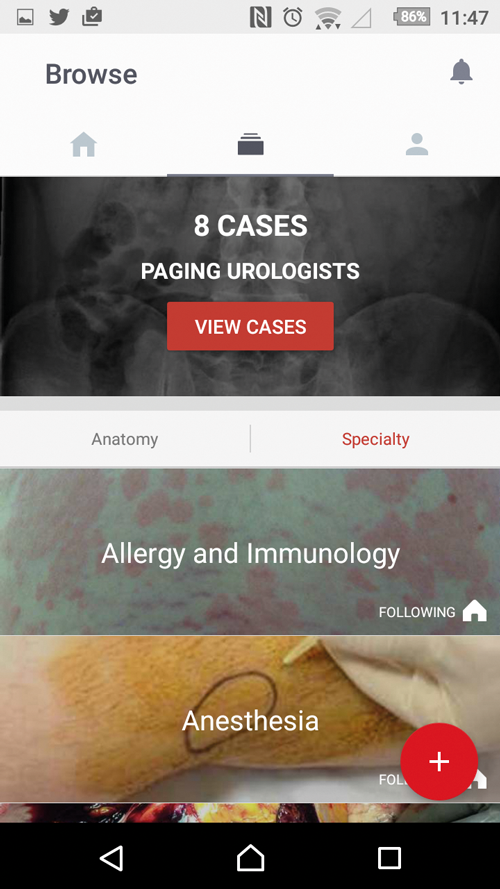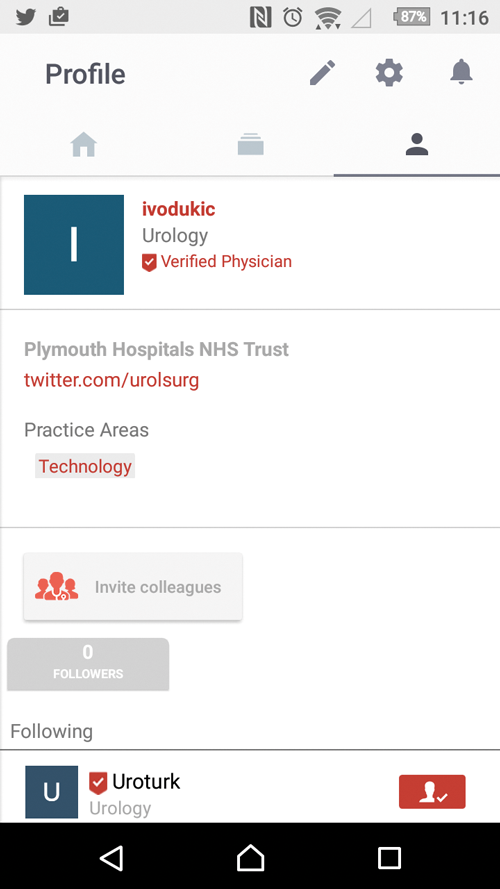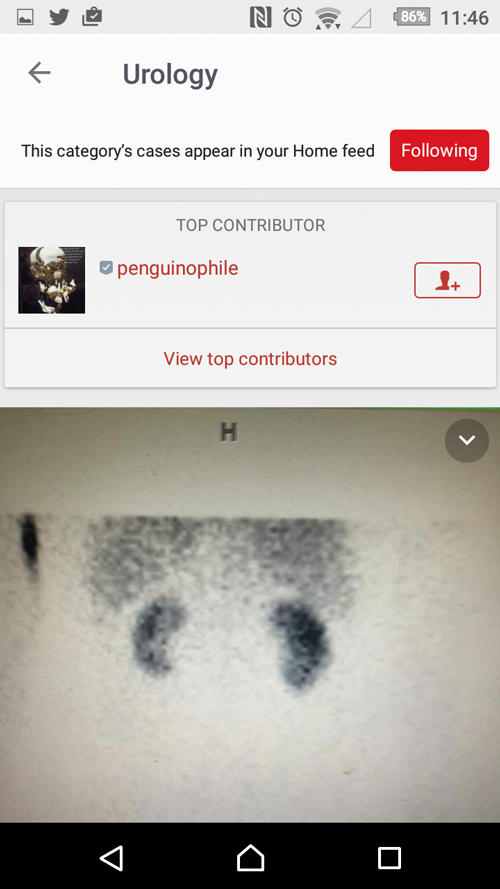Figure 1 is an app that enables the sharing of medical images to aid learning. In essence, Figure 1 is an Instagram for healthcare. It was launched in 2013 and now connects a network of up to one million healthcare professionals. The aim of Figure 1 is to allow medical professionals to discuss, share and comment on medical cases. Figure 1 was born from the idea that sharing images of difficult cases can help doctors reach the right diagnosis.
The app is available as a free download on the App Store (iOS) and on Google Play Store (Android). The app comes with a user-friendly interface and supports a wide range of media including single photo images, stack images such as CT and MRI scans, ECGs and histopathology slides. You can access a website version of the app through the internet via https://figure1.com.
Before sharing an image there is an extensive list of how to remove patient identifiable information from images. The app contains integrated tools for removing patient identifiable details to aid with anonymisation of patient images. All of the uploaded images are manually reviewed prior to being added to the database, so there is a double check prior to an image being uploaded to a central database. For each image a caption is requested, which is where there should be a succinct history, examination and investigation findings. There are country specific consent or authorisation forms with patients having the ability to sign the forms electronically.

The concept for the Figure 1 app is good, and both the app and website are well executed. The images are generally interesting, although there are relatively few urological cases. The site has clearly gained a widespread following worldwide and there is an obvious potential for enhancing learning for medical students and junior doctors, with the prospect of commenting on cases, seeing unusual cases and getting feedback from peers and more senior doctors.
If you are thinking of contributing, then you should be aware of your local policies for sharing photographs or recordings of patients. The General Medical Council (GMC) lists conditions where additional consent is not required as it is implicit in the consent given to the investigation or treatment including:
- Images of internal organs or structures
- Images of pathology slides
- Laparoscopic and endoscopic images
- Recordings of organ functions
- Ultrasound images
- X-rays [1]
Additionally, the GMC states that, “You must get consent before making recordings for teaching, training, the assessment of healthcare professionals and students, research or other healthcare-related purposes. It is good practice to get the patient’s written consent, but if this is not practicable, the patient’s oral consent should be obtained. Written consent or a record of oral consent should be stored with the recording.” [1]


In my opinion, the Figure 1 app would be more useful if it contained a group function and the images or recordings were secure within the group. This would allow difficult cases to be shared within established healthcare communities for the benefit of healthcare professionals and individual patients. The crowd sourced nature of the current site and app allow anybody to comment on images and there is no quality control regarding the accuracy of the teaching the site provides.
In summary, the Figure 1 app provides a wide variety of cases and has an engaging layout. The current site could benefit from more urological cases, so I encourage urologists to get involved and submit both interesting and educational cases. This app is a useful addition to learning and education and we should embrace the opportunities it provides to educate a new generation of learners.
Reference
1. GMC. Making and using visual and audio recordings of patients. April 2011.





